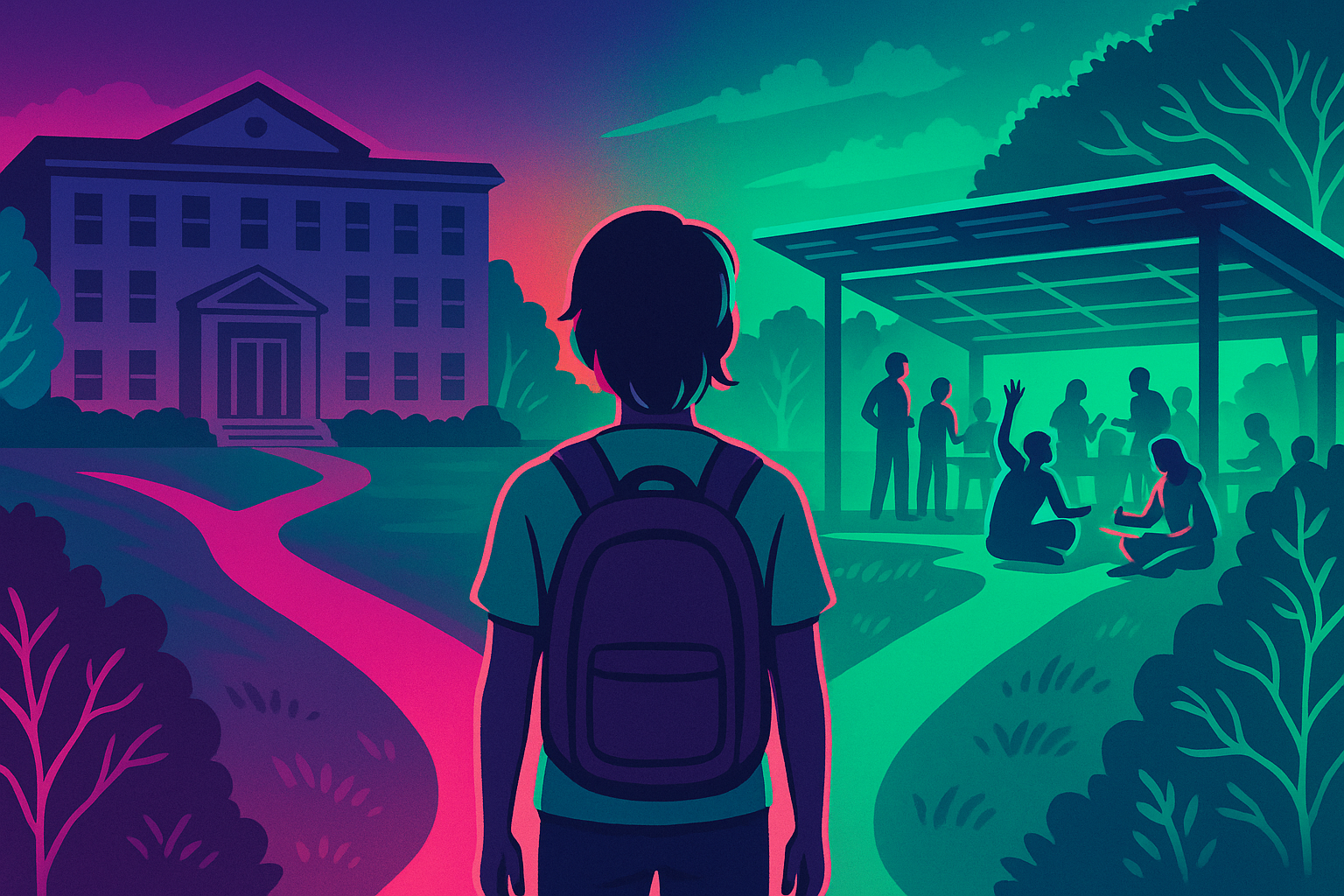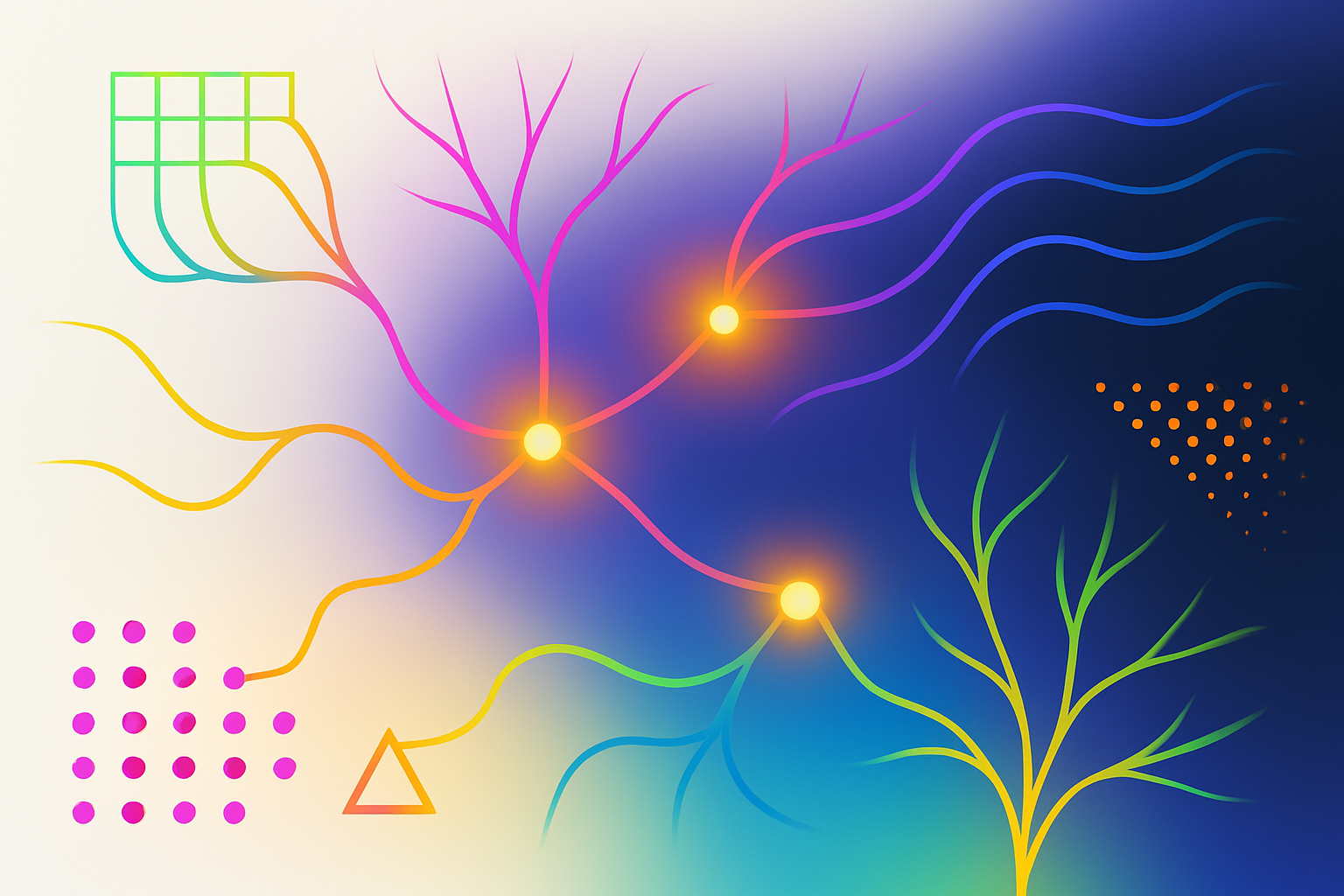
 John Moravec
John MoravecLearning at the intersection of agency and self-efficacy
At the heart of meaningful education is a powerful idea: learners thrive when they are trusted to shape their learning and believe they are capable of success. This fusion of agency (being afforded real choices) and self-efficacy (believing in one’s ability to act on those choices) transforms education from routine compliance into purposeful growth.
From Manifesto 25:
Nirvana is found in the fusion of agency with self-efficacy. When learners and educators achieve both agency (the freedom to shape their paths) and self-efficacy (the belief that they can succeed) education transcends traditional goals and reaches its ultimate purpose: empowering individuals to lead fulfilling, impactful lives. Schools should actively cultivate this balance by blending choice-driven learning with consistent opportunities for learners to build and demonstrate competence. This fusion prepares students for the future by enabling the inspiration and vision necessary to create it.
Agency without self-efficacy resembles aimlessness. A learner with options but lacking skills or confidence may disengage. Self-efficacy without agency becomes obedience. Learners follow others’ plans but don’t lead their own. Empowerment emerges when people are free and able to make meaningful decisions, reflect on progress, and adapt with purpose.
Too often, schools fall short on both. What is presented as “alternatives” or “choices” becomes a set of false selections, based on shallow decisions such as electives, paint colors, or seating arrangements, while competence is measured through high-stakes tests. Learners navigate a system that respects neither autonomy nor confidence. To change this, learning environments must support both freedom and growth.
This means co-designing learning goals, offering diverse ways to show understanding, and making space for iteration, failure, and reflection. Learners who reflect on progress and understand that growth is within their control take initiative, persist, and think creatively about the future.
The mind needs both agency and self-efficacy
Neuroscience and psychology confirm what many educators know: learning flourishes when people feel both autonomous and capable.
Agency, the sense of control over actions, is key to motivation. When learners make real choices, the brain releases dopamine, which fuels curiosity and engagement. According to self-determination theory (Deci & Ryan, 1985), autonomy improves performance, creativity, and perseverance.
Self-efficacy, the belief in one’s ability to succeed, is equally important. Psychologist Albert Bandura (1997) found that self-efficacy predicts effort, how learners handle setbacks, and whether they persist. Belief in ability leads to resilience and growth.
Cognitive science shows that decision-making and goal-setting engage the prefrontal cortex, strengthening planning, self-regulation, and adaptability. When learners practice agency and experience progress, they develop habits of mind that support lifelong learning.
The fusion of agency and self-efficacy supports motivation, mental health, and flexible thinking. It is essential for deep, meaningful learning.
A central theme in Manifesto 25 is that mainstream education is built on outdated assumptions about motivation and learning, often prioritizing obedience over curiosity. When schools restrict agency and self-efficacy, they suppress genuine learning. Environments that support real growth do both: they offer meaningful choices and reinforce the belief that individuals can act on them. This dual focus, choice and confidence, helps people navigate uncertainty with clarity, resilience, and purpose.
Designing for the fusion of agency and self-efficacy
Fusing agency and self-efficacy requires actions that go beyond surface-level change. It means rethinking how learning is structured and supported. Here are five design principles that help make this possible:
- Curriculum that fosters ownership and purpose
Invite learners into curriculum design, where relevance fuels motivation, and where motivation deepens learning. Build flexibility into what and how people learn without losing depth. Frame learning around open-ended, interdisciplinary problems:
- How can we make our campus more sustainable?
- Who gets remembered in history, and why? - Assessment that builds confidence instead of compliance
Self-efficacy grows through real progress. Use transparent, varied, and formative assessment. Portfolios, peer feedback, public presentations, and goal-setting help learners view learning as growth. - Structures that support autonomy without abandoning learners
Agency needs support. Weekly planning, check-ins, reflection journals, and advisory periods help learners manage complexity. These routines support autonomy. - A culture of trust, high expectations, and belonging
Self-efficacy grows in safe environments. Build a culture of shared norms, mutual respect, and recognition. When learners know their voice matters, they believe they can make a difference. - Educators need agency and self-efficacy, too
Educators are learning designers, not content deliverers. They ask questions, offer feedback, and learn with others. This requires time, trust, and autonomy. A system that denies agency to educators cannot build it in learners.
In practice…
When we look at learning environments that support both agency and self-efficacy, we don’t find disorder. We find focus, energy, and purpose. These spaces are structured with intention. They give learners freedom, along with the tools to use it well. Boundaries are clear, but they exist to support experimentation and growth. Learners are doing work that matters, guided by expectations they help define with peers and educators.
At High Tech High in the United States, learners co-design projects with teachers, present their ideas, revise their work, and share it publicly. In Lumiar Schools in Brazil, they shape their education by selecting thematic challenges. Progress is tracked through portfolios and regular conversations, not test scores. In Finland, learners take part in class meetings where they help decide on classroom norms, learning goals, and priorities.
Of course, these are not isolated examples and we can see bits of agency and self-efficacy fused together in various environments. However, these examples show how schools can be built differently. With the right structures, learners are treated as thoughtful, capable people. They are given space to grow, but also asked to take responsibility for that growth. When this balance is in place, school becomes a place of purpose, not routine.
Changing how schools work means questioning old habits. It means moving past the idea that education is about control. As stated in the manifesto, the purpose of education is not to make people fit into the world as it is, but to help them imagine how it could be—and help them bring it to life. Agency and self-efficacy should not be treated as something that is supplemental to a curriculum. They are what make this kind of learning possible.
When people know they have real choices, and believe they can make a difference, they stop waiting for the future. They begin to shape it. Schools that support this mindset prepare learners to lead the future.
Read and sign Manifesto 25 at https://manifesto25.org
References and recommended readings
Bandura, A. (1997). Self-efficacy: The exercise of control. W H Freeman/Times Books/ Henry Holt & Co.
Deci, E. L., & Ryan, R. M. (1985). Intrinsic motivation and self-determination in human behavior. New York: Plenum Press.



